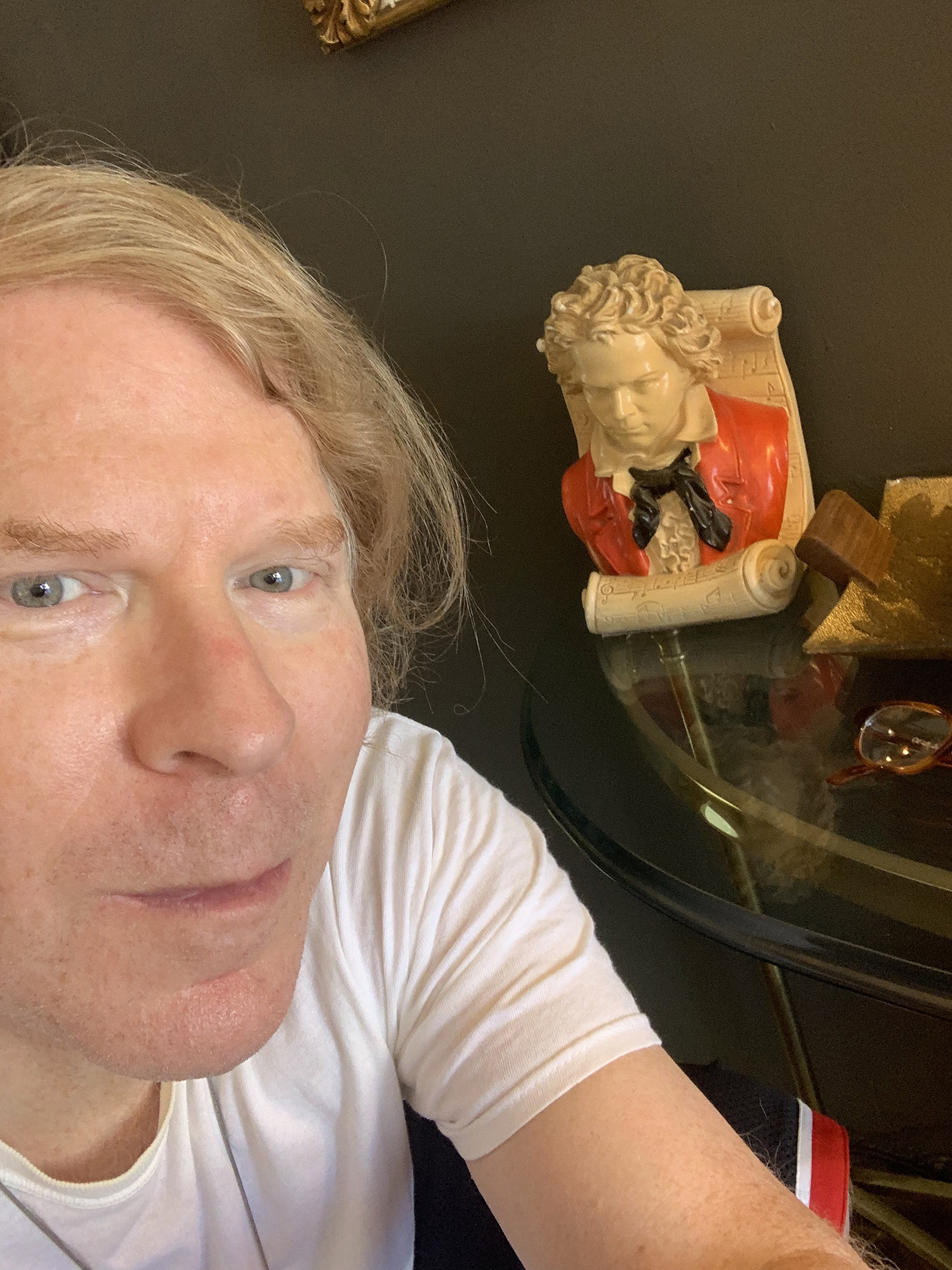Jazz Beginnings Anew

Michael Robinson running into LVB last week in a West Hollywood boutique. WAM was there, too. It does appear the beginnings of jazz were in the form of solo piano given the historic contributions and innovations of Scott Joplin and Jelly Roll Morton among other early manifestations. Additionally, one of the first composers of songs becoming jazz standards was pianist George Gershwin, adding the fully notated Three Preludes for solo piano. His "I Got Rhythm," with lyrics by Ira Gershwin, became part of the very foundation of Swing and Modern jazz together with blues forms, both entities assimilated with myriad permutations. "I Got Rhythm" appears on the Not Like Before album, one of three albums recorded during an afternoon session on August 10, 2021. While suffused with the Beatles and rock, these being central aspects of my cultural generation, I was fortunate to be baptized into a deep love for jazz by early teachers Barney Bragin and Rollan Masciarelli, followed by studies and a subsequent close friendship with one of the primary architects of modern jazz, Lee Konitz. And another great improvisational form, Indian classical music, became as deep a love as jazz, having been blessed by studies and personal interactions with Harihar Rao, Nazir Ali Jairazbhoy, Pandit Jasraj, Shivkumar Sharma, Kala Ramnath, Anindo Chatterjee, Swapan Chaudhuri and Zakir Hussain among others. My compositions and performances for meruvina, the name I invented for existing software and hardware used in original ways, began as my vision of both jazz and Western classical music at once, finding this to be the direction suggested by the Interstellar Space album of John Coltrane and Rashied Ali as opposed to emulating styles of the past either conventional or avant-garde. The meruvina became my chamber orchestra, both conducted by and performed by myself, so to speak, the musical medium being programming. One of my professors believed having this newest of musical instruments, the computer, come to life is perhaps the most challenging endeavor in all of music. Studies of Indian classical music began in 1994, and these soon became another central aspect of my meruvina compositions and performances, discovering and inventing ways to synergize with my jazz and Western classical music orientations both traditional and avant-garde. Solo piano improvisation happened purely by chance, beginning with a request from a friend's mother, in her nineties, to play the songs she loved once a week on Sunday afternoon for three or four hours, including a break for coffee, fruit and pastries. Jocelyn was captivated by my playing, I believe, because these songs were also the standards of jazz, and while not being a pianist, I did have a true sense of how the songs should sound given my familiarity through recordings by master jazz instrumentalists and vocalists. On my own, at first, I began exploring solo piano improvisation with ragas and free improvisation, the latter first credited to the teacher of Lee Konitz, pianist Lennie Tristano, whose solo recordings are my favorites from his ouevre. And when I began to wonder about moving beyond ragas and free improvisation, intuiting an original and personal approach to the playing of standards, I took a cue from Tristano, liberating the left hand from chords, and playing an improvised melodic bass line providing counterpoint with the right hand extemporizations. My own approach to chords began to be added, too, sparked by a composer who shares the same birthday of March 11 with Jocelyn and myself, Henry Cowell, together with the playing of pianist Red Garland. While Red Garland has become my favorite jazz pianist, this honored elevation was held by Bill Evans for many years. Evans, who was a friend of Lee Konitz, including Lee having a photo of Bill close to the piano in the music room of his Manhattan apartment, said that solo piano was his favorite medium for jazz improvisation, and he only focused on trio performances and recordings for practical reasons. Indeed, his Alone album, and another album inspired by Lennie Tristano's recording innovations, Conversations With Myself, contain my favorite playing by Bill together with the Kind of Blue album and some late recordings with drummer Eliot Zigmund whose approach on these sessions parallels Jimmy Cobb. So, here I am, continuing to explore and develop the endless possibilities of solo jazz piano, including the concept of perhaps joining with a drummer, tabla player, conga player, or doumbek player, inspired by the trio of Benny Goodman, Gene Krupa and Teddy Wilson, the trio of Nat King Cole, Buddy Rich and Lester Young, and the more closely aligned format of Indian classical music with one instrumentalist or vocalist and one tabla player. The specific musical things I'm doing at the piano have been discussed elsewhere, though there are aspects I've not yet written about, too.
Count Basie has a divine piano touch and style Jazz improvisation is something else, absorbing new influences and personalities for evolution. Like God in the form of Count Basie said, "Something different and exciting is always subject to happen, and I'm waiting to hear it." - Michael Robinson, August 2022, Los Angeles
© 2022 Michael Robinson All rights reserved
Michael Robinson is a Los Angeles-based composer, programmer, jazz pianist and musicologist. His 180 albums include 151 albums for meruvina and 29 albums of piano improvisations. Robinson has been a lecturer at UCLA, Bard College and California State University Long Beach and Dominguez Hills.
|